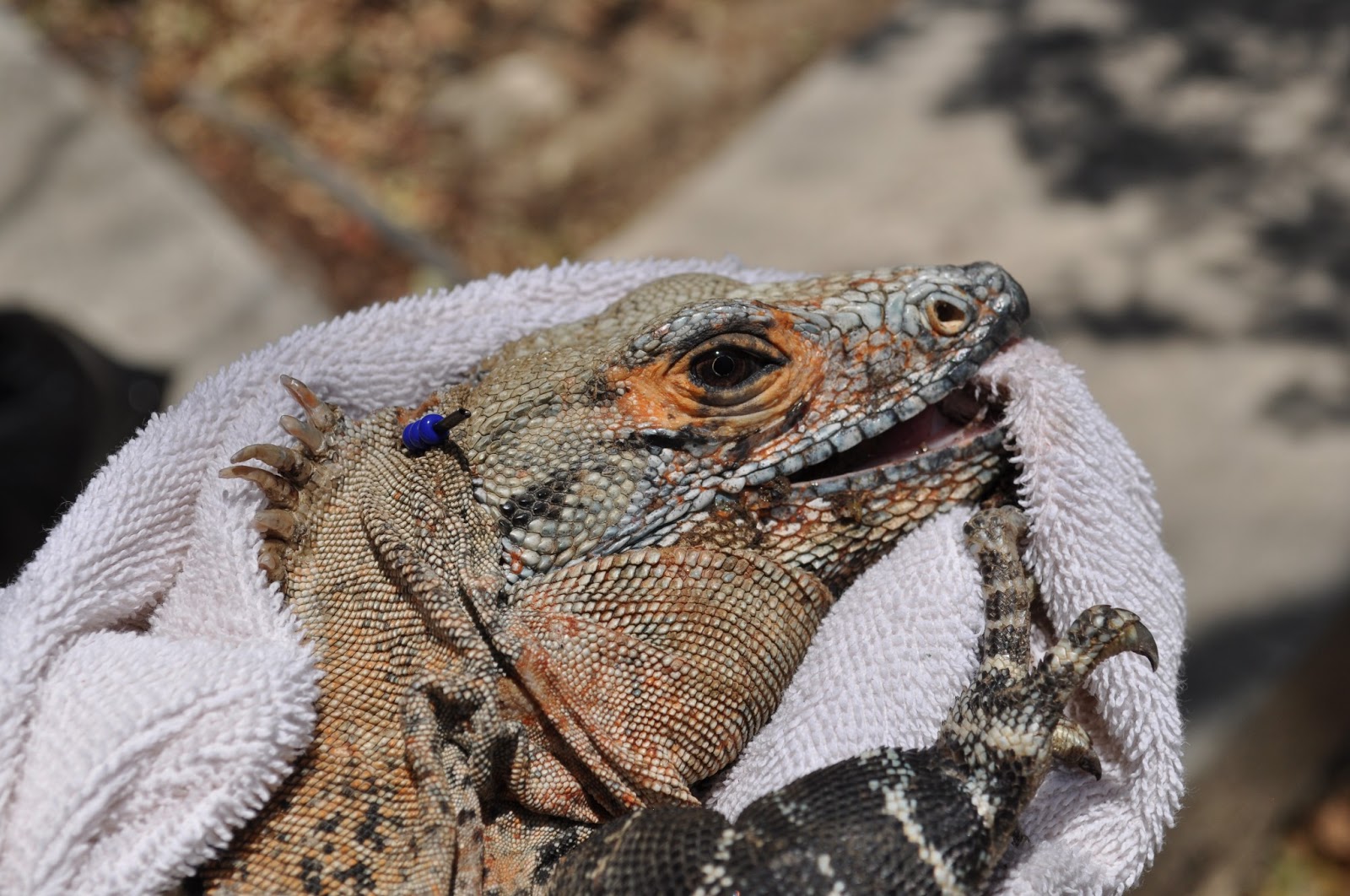....in that an iguana observing another iguana drinking will do the same: a response of bystanders to information available in their social environment. It is dry and hot at Palo Verde and water sources are known to at least some iguanas. Air conditioners drip water, regularly and reliably. GGG drank and a UM (unmarked) iguana quickly joined.
Remember the sap-eating male iguana? Here he is behind the library. Wasn't thrilled about me but didn't rush to flee, just moved off.
Yes, there is an iguana in the green grass. Does is mean there is a hundred UMs of this size?
The rarely seen Brown-Red-Green, an adult female.
 |
| Corporate Portrait |
My second last night -- time to sort equipment to leave and begin the packing process...

















































